Swords in the Mist Re-Read: “Adept’s Gambit”
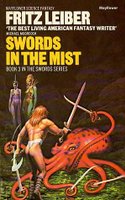 Today Bill Ward and I finish our read through of Fritz Leiber’s collection of Fafhrd and Gray Mouser stories, Swords in the Mist. This week we’re looking at the sixth tale in the collection, “Adept’s Gambit.”
Today Bill Ward and I finish our read through of Fritz Leiber’s collection of Fafhrd and Gray Mouser stories, Swords in the Mist. This week we’re looking at the sixth tale in the collection, “Adept’s Gambit.”
I don’t usually write reviews of products or stories I don’t like — I prefer to tell people about the works I think they’d enjoy and honestly, I still subscribe to what I learned from Cowboy Bob, a TV Host, when I was 4: “If you can’t say anything nice, don’t say anything at all.”
So my harsh words for this particular story are a bit of a departure for me. Still, Bill and I set out to re-read all the tales of this book and share our honest opinions, so… here you go.
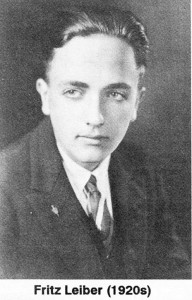 Howard: Most of the time juvenilia goes unpublished in an author’s life time so I don’t feel it’s fair to critique it. The writer, after all, had never submitted it for critical examination. This is different. Leiber made a conscious decision to reprint what was clearly an older, far rougher work and I can only assume that he must have been in desperate financial straits to release it to the world without addressing all of the problems I found. By the time he was involved in collecting these stories into anthologies, he was a polished pro and had to know just how bad this story is.
Howard: Most of the time juvenilia goes unpublished in an author’s life time so I don’t feel it’s fair to critique it. The writer, after all, had never submitted it for critical examination. This is different. Leiber made a conscious decision to reprint what was clearly an older, far rougher work and I can only assume that he must have been in desperate financial straits to release it to the world without addressing all of the problems I found. By the time he was involved in collecting these stories into anthologies, he was a polished pro and had to know just how bad this story is.
Bill: Although I’d add it is this story’s status as the first written Fafhrd and Gray Mouser story, showcasing Leiber’s original intention to create adventures in a historical landscape that makes “Adept’s Gambit” at least interesting to look at in comparison with the rest of his oeuvre. As I understand it, it was published originally in Night’s Black Agents, a collection of short stories that are mostly horror or what we’d now call urban fantasy.
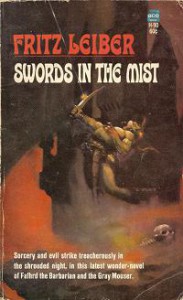 Howard: It should probably have been included in an appendix or something, as has been done with Robert E. Howard’s fragments and early drafts in the most recent editions of his stories… although that sort of thing simply wasn’t done for fantastic literature when this tale was first printed. Because you’re absolutely right — it’s of interest if you want to take a look at how Leiber’s writing about these characters evolved. Compared to the rest of the stories in the book, however, it reads like bad fanfic.
Howard: It should probably have been included in an appendix or something, as has been done with Robert E. Howard’s fragments and early drafts in the most recent editions of his stories… although that sort of thing simply wasn’t done for fantastic literature when this tale was first printed. Because you’re absolutely right — it’s of interest if you want to take a look at how Leiber’s writing about these characters evolved. Compared to the rest of the stories in the book, however, it reads like bad fanfic.
We’ll have to come back and read some more Fafhrd and Gray Mouser stories eventually, because I’d hate for this clunker to be the last one we discuss. What a crashing bore. I’m not sure which irritated me more — the self-indulgent wandering prose that reads like Clark Ashton Smith or H.P. Lovecraft at their very worst (or perhaps James Branch Cabell) or the incredibly dull background story of Ahura. The convoluted sentences with all their clauses that modify and explain and comment internally upon one another with sly winks really grated upon me. Too much cleverness; get on with the story.
Bill: And that reminds me of another point, that Leiber had this story critiqued (exhaustively and perhaps a bit too pedantically) by Lovecraft. I’ve even seen it theorized that Lovecraft’s criticisms of the historicity of Leiber’s tale might have put Leiber off the historical adventure mode altogether, and set him on the road to Nehwon. Certainly “Gambit” reads in places like an imitation of certain Weird Tales authors, right down to the frequent mention of Elder Gods.
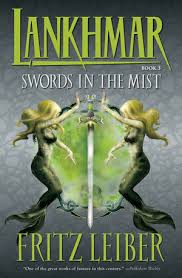 Howard: Wow — well that explains a lot about the tone. I wonder what the deal was with Leiber’s interest in the tale of how Ahura came to be a victim and stayed that way (along with her inability to do anything clever to avoid her fate)? It spooled out in excruciating detail for pages and pages and pages and if I hadn’t promised to write about it on the blog I would have stopped. It was so dead dog dull. I couldn’t believe Fafhrd and the Mouser were listening to this story as they walked along, or that we were supposed to believe that they would. I couldn’t help being reminded a little of the first two Sherlock Holmes novellas, “A Study In Scarlet” and “The Sign of Four” where the narrative wanders away from the heroes for long stretches. That was frustrating and almost put me off of reading Doyle. (It’s worth noting that the Holmes stories didn’t take off based on those two, but upon the much shorter stories that were written a little later). This was far, far worse.
Howard: Wow — well that explains a lot about the tone. I wonder what the deal was with Leiber’s interest in the tale of how Ahura came to be a victim and stayed that way (along with her inability to do anything clever to avoid her fate)? It spooled out in excruciating detail for pages and pages and pages and if I hadn’t promised to write about it on the blog I would have stopped. It was so dead dog dull. I couldn’t believe Fafhrd and the Mouser were listening to this story as they walked along, or that we were supposed to believe that they would. I couldn’t help being reminded a little of the first two Sherlock Holmes novellas, “A Study In Scarlet” and “The Sign of Four” where the narrative wanders away from the heroes for long stretches. That was frustrating and almost put me off of reading Doyle. (It’s worth noting that the Holmes stories didn’t take off based on those two, but upon the much shorter stories that were written a little later). This was far, far worse.
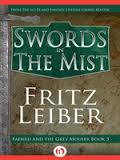 Bill: Which is an interesting observation, as those Doyle stories, like “Gambit” are early works, where it seems both authors had trouble keeping the focus on the ostensibly main characters.
Bill: Which is an interesting observation, as those Doyle stories, like “Gambit” are early works, where it seems both authors had trouble keeping the focus on the ostensibly main characters.
The Ahura and Anra story, as it goes on forever, really feels like a gothic horror story wedged into the framing mechanism of a rather tepid historical adventure. What is difficult to assess is exactly what Leiber’s intentions were — since I haven’t read an original draft of the piece (and don’t plan on it!), it’s hard to say how much is original and how much is touched up later. In the case of some of the character moments between the twain, I’d be very curious to know the answer, because there is some good stuff in here that prefigures later Leiber if it isn’t indeed a case of him dressing it up at least ten years after he wrote it.
Howard: Yes, there were clever little asides, some of which were more interesting than the laborious plot. There were good character moments. But the rest, yeesh. Even the pacing in the fight scenes was off. Mouser wins the first sword fight with the adept, but it’s not entirely clear how, and it went on for a very long time. The conclusion was devoid of tension possibly because Leiber had recycled that same end in a far more successful story that we’ve already read (“The Jewels in the Forest”) or possibly because I was so ready to stop reading I didn’t care.
Bill: And notice “Jewels” (“Two Sought Adventure”) is the first published Fafhrd and Gray Mouser story — that’s the sort of thing I came away interested in with regards to “Gambit,” how it was the springboard for the stories we really love. At least two elements of “Gambit” figure in the climax of “Jewels:” the disembodied internal organs, and the idea of living, flexible stone.
And along with the things you mention, I also took some real, if small, enjoyment out of elements that would contrast with later work. Despite being set in the historical past, there is probably as much if not more magic in this story than a typical Lankhmar tale (Fafhrd and the Gray Mouser set out on their mission, after all, to fix a curse that has every woman they get close to literally turn into an animal for the duration of their embrace), and the Mouser is more of a magician than I think we’ve ever seen him. It’s implied that our pair are also maybe some sort of long-lived, reoccurring uber heroes.
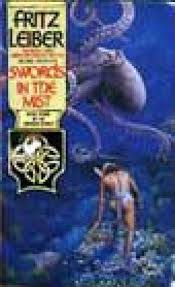 Howard: Yeah, you’re right both about the magic and the implication of them being uber-heroes. I kind of wish he’d returned to that later.
Howard: Yeah, you’re right both about the magic and the implication of them being uber-heroes. I kind of wish he’d returned to that later.
There are other problems. For instance, the villain’s plan didn’t make very much sense. Why was it, again, that he pretended to die the first time? And why did he think that they’d LIKE the weird castle? And that whole stupid curse was to get them to work with him? The entire story felt like it was written with no forethought or planning.
I see in “Adept’s Gambit” only a few hints as to the great writer that Fritz Leiber was to become. I hope never to read it again. If I were on a deserted island for years with nothing to read but this, it would go untouched.
Bill: Those are all spot-on criticisms, and I find myself far more curious to read about “Gambit” than I’d ever be to read it again (this last time was number three, that’s plenty). I found myself enjoying it more this time than I ever had before purely because I knew more about the history of it … and because I knew I would have no trouble finding something to blog about.
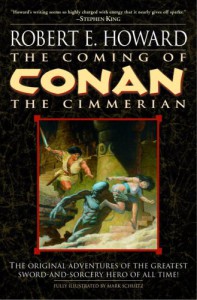 And I agree, we can’t leave Leiber on this note indefinitely, we’ll just take a brief Hyborian detour first.
And I agree, we can’t leave Leiber on this note indefinitely, we’ll just take a brief Hyborian detour first.
Howard: Speaking of which… next week we’ll do a brief re-cap of this book and talk about The Coming of Conan, our next re-read. It contains some of Robert E. Howard’s very best, and very worst, Conan stories, so it’s apt to be a roller coaster. If you want to join in, we’ll be sure to tell you which tale we’re reading in case you’ve got the story in another edition. Almost all of its contents have been printed multiple times, with multiple changes, something we’ll discuss next week.
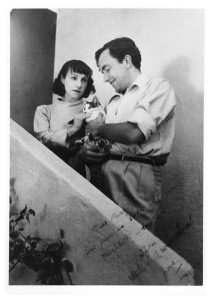
7 Comments